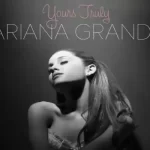The world of music is a tapestry woven from a myriad of genres, each offering its own unique flavor and cultural significance. One such genre that has captured the hearts of audiences for centuries is opera music. With its rich history, powerful emotions, and breathtaking performances, opera stands as a testament to the boundless creativity of human expression.
Music Songs A Symphony of Emotions
Opera music is characterized by its use of soaring vocals and orchestral accompaniment to convey a range of emotions, from love and passion to tragedy and despair. Arias, or solo performances by the main characters, are the backbone of opera songs. These songs often act as windows into the characters’ souls, allowing the audience to connect on a deeply emotional level.

Music Artists Masters of Vocal Prowess
Throughout history, opera has been graced by the presence of legendary artists whose voices have left an indelible mark on the genre.
| Artist Name | Nationality | Notable Works |
|---|---|---|
| Luciano Pavarotti | Italian | “Nessun Dorma,” “La donna è mobile” |
| Maria Callas | Greek | “Casta Diva,” “O mio babbino caro” |
| Plácido Domingo | Spanish | “E lucevan le stelle,” “Granada” |
| Renée Fleming | American | “O mio babbino caro,” “Song to the Moon” |
| Andrea Bocelli | Italian | “Con te partirò,” “Time to Say Goodbye” |
| Joan Sutherland | Australian | “The Mad Scene,” “Casta Diva” |
| Jonas Kaufmann | German | “Nessun Dorma,” “Che gelida manina” |
| Anna Netrebko | Russian | “Casta Diva,” “Sempre Libera” |
| Leontyne Price | American | “O Patria Mia,” “Ritorna vincitor!” |
| Plácido Domingo Jr. | Spanish-Mexican | “Perhaps Love,” “Siempre en mi corazón” |
Music Examples A Glimpse into Opera’s Diversity
Opera’s repertoire spans a wide spectrum, from the haunting melodies of Puccini’s “Nessun Dorma” to the enchanting arias of Mozart’s “The Magic Flute.” Each composition showcases the versatility of opera, traversing different eras, languages, and cultures. This diversity is a testament to opera’s ability to adapt and evolve while retaining its core essence.
Characteristics
Opera is characterized by several key elements, including its use of vocal technique, orchestration, and storytelling through music. The interplay between the soloists, chorus, and orchestra creates a dynamic and multidimensional sonic experience.
- Vocal Emphasis: Opera is primarily a vocal form of music, where singers perform using a wide range of vocal techniques, showcasing their abilities in both singing and acting.
- Narrative Storytelling: Operas often tell elaborate stories, combining music, lyrics, and theatrical elements to convey emotions, drama, and complex plots.
- Arias and Ensembles: Arias are solo pieces performed by a single singer, allowing for emotional expression, while ensembles involve multiple characters singing together, creating harmonious interactions.
- Recitatives: These are sung dialogues that move the plot forward, often with a speech-like rhythm, serving as a bridge between arias and ensembles.
- Orchestral Accompaniment: Orchestras play a crucial role in opera, providing a rich and dynamic musical backdrop that complements the singers and adds depth to the storytelling.
- Libretto: The text or lyrics of an opera is known as the libretto, and it’s carefully crafted to fit the music, conveying the characters’ thoughts, emotions, and interactions.
- Opera Houses: Operas are typically performed in opera houses, which offer acoustically optimized settings and elaborate stage designs to enhance the theatrical experience.
- Costumes and Sets: Elaborate costumes and intricate sets contribute to the visual spectacle of opera, creating immersive environments that transport the audience to different times and places.
- Vocal Registers: Opera singers often showcase their vocal range by singing in different registers, from the deep bass to the high soprano, adding diversity to the performances.
- Emotional Expressiveness: Opera music is renowned for its ability to convey a wide range of emotions, from love and joy to heartache and tragedy, through both music and singing.
- Language Variation: Operas can be performed in various languages, allowing for cultural adaptations and making the art form accessible to audiences around the world.
- Chorus and Chorales: Choruses provide a collective voice, representing groups of people, while chorales emphasize communal singing, adding depth and resonance to the music.
- Leitmotifs: These recurring musical themes are associated with specific characters, emotions, or concepts, providing continuity and enhancing the narrative structure.
Stylistic Origins
Opera’s roots can be traced back to the late Renaissance period in Italy, where the Florentine Camerata sought to recreate the dramatic music of ancient Greek theater. This endeavor gave birth to the operatic form, combining vocal expression with theatrical storytelling. Over time, opera spread across Europe, taking on unique stylistic characteristics in different regions.
Cultural Origins A Global Artform
While opera’s origins lie in Italy, it quickly transcended cultural boundaries to become a global art form. From the opulent opera houses of Europe to the vibrant theaters of Asia, opera found a home in diverse cultures. Each culture infused its own traditions and flavors into the genre, resulting in a rich tapestry of interpretations and performances.
Derivative Forms Evolution and Adaptation
As opera continued to evolve, it gave rise to various derivative forms that explored different facets of the genre. Operettas, for example, emerged as lighthearted and comedic offshoots of traditional opera. Similarly, verismo opera delved into gritty, realistic portrayals of everyday life. These derivative forms showcase opera’s ability to reflect and respond to changing artistic sensibilities.
Subgenres
Within the broad spectrum of opera, numerous subgenres have flourished, each with its own distinct characteristics. Bel canto, known for its emphasis on beautiful vocal melodies, contrasts with the dramatic intensity of Wagnerian opera. Meanwhile, comic opera and grand opera offer varying degrees of humor and spectacle. These subgenres cater to a wide range of tastes and preferences.
Exploring Curiosities
Q1: What is the origin of the term “opera”?
The term “opera” is derived from the Latin word “opus,” meaning “work.” It reflects the collaborative nature of the art form, which involves the combined efforts of composers, librettists, singers, and musicians to create a cohesive work of art.
Q2: Is opera exclusively in Italian?
While Italian opera is perhaps the most well-known, opera is performed in a variety of languages, including French, German, Russian, and English. Different languages add unique nuances to the performances, enriching the audience’s experience.
Q3: Are there modern adaptations of opera?
Absolutely. Modern composers continue to create new operatic works, exploring contemporary themes and musical styles. These adaptations bridge the gap between tradition and innovation, ensuring that opera remains relevant and captivating to modern audiences.
Conclusion
Opera music transcends the boundaries of time and culture, offering a mesmerizing glimpse into the depths of human emotion and creativity. From its humble beginnings in Italy to its global reach today, opera has proven its ability to evoke profound feelings and connect people across generations. As the curtain falls on this exploration, one thing remains clear: opera’s enduring allure will continue to enthrall and inspire for generations to come.








